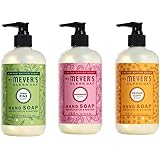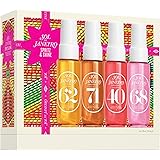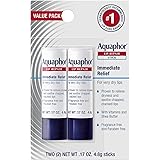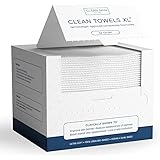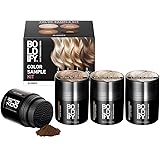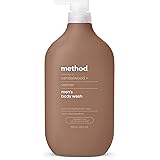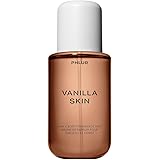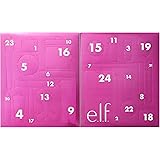Mastering Essential Hair Products: Beyond Basic Vocabulary
The ability to confidently discuss and select hair products in English is an invaluable skill, extending beyond mere shopping. It empowers you to articulate your needs to a stylist, understand product descriptions, and engage in everyday conversations about personal grooming. Let us expand upon the foundational terms introduced in the video, delving into the nuances of their usage and the science behind their efficacy.
Hair Spray: The Art of Architectural Hold
As the video highlighted, “hair spray” is a ubiquitous term. Its primary function is to provide hold, ensuring your meticulously styled hair remains in place throughout the day. Functionally, hair sprays achieve this through a fine mist of polymers, which create a flexible or rigid film around each strand of hair.
Manufacturers formulate various types of hair spray to cater to diverse styling needs. For instance, a flexible hold spray allows for movement and touchability, making it ideal for natural, brushed-out looks. Conversely, an extra-hold or strong-hold spray is indispensable for intricate updos or styles requiring robust, long-lasting stability, effectively locking every strand into position. Furthermore, some specialized variants offer additional benefits such as humidity resistance, heat protection, or a shiny finish, enhancing their multi-functional utility in professional styling contexts.
Hair Gel: Sculpting and Defining with Precision
“Hair gel” represents another cornerstone of hair styling, renowned for its capacity to sculpt and define. Unlike sprays that provide an overall hold, gels allow for more localized control, shaping strands into specific forms or creating a sleek, “wet-look” finish. The formulation typically involves water-soluble polymers that create a sticky, viscous texture, which then dries to form a firm cast around the hair.
Consider the application: a small amount of gel can tame unruly flyaways or create sharp partings, while a more generous quantity can sculpt elaborate styles or give a dramatic, slicked-back appearance. Many modern gels also incorporate conditioning agents and shine enhancers, mitigating the potential for stiffness or flakiness often associated with older formulations. Consequently, understanding the different strengths—light, medium, strong—is paramount to achieving the desired aesthetic outcome.
Conditioner: The Elixir of Hydration and Manageability
“Conditioner,” a product mentioned in the video, is far more than just a detangler; it is a critical component of any comprehensive hair care regimen. Its fundamental purpose is to restore moisture, smooth the hair cuticle, and improve overall manageability after shampooing. The chemical process involves cationic surfactants and emollients that bind to the negatively charged hair shaft, effectively neutralizing static and imparting a soft, slippery feel.
There exists a diverse spectrum of conditioners, each tailored to specific hair concerns. Rinse-out conditioners are daily staples, offering light hydration and detangling. Leave-in conditioners provide continuous moisture and protection without needing to be washed out, often serving as a primer before styling. Deep conditioners or hair masks, on the other hand, deliver intensive nourishment and repair, typically applied once or twice a week to address significant dryness, damage, or breakage. Selecting the appropriate conditioner is vital for maintaining optimal hair health and vitality.
Comb: The Precision Tool for Detangling and Styling
The humble “comb,” though often overlooked, is an indispensable tool in hair care, distinct from a brush in its primary functions. A comb features a series of teeth, which can be wide-set or fine-set, designed for specific tasks. Wide-tooth combs are exceptionally effective for detangling wet or fragile hair, minimizing breakage by gently separating knots without undue stress on the strands.
Conversely, fine-tooth combs are ideal for creating precise partings, smoothing hair for sleek styles, or backcombing to add volume. Furthermore, specialized combs such as tail combs, with their long, pointed handles, are perfect for sectioning hair during styling or coloring processes. Understanding the different types and their applications ensures you utilize the right tool for the job, preventing damage and achieving superior results.
Hair Dye: The Transformative World of Color Chemistry
“Hair dye,” as introduced, signifies the broad category of products used to change hair color. This seemingly simple act involves complex chemical interactions that can dramatically alter one’s appearance. Hair dyes are generally categorized by their permanence and the depth of color change they achieve.
Temporary dyes deposit color on the hair surface, washing out in one or two shampoos. Semi-permanent dyes penetrate slightly deeper, lasting several washes without involving harsh chemicals like ammonia or peroxide. However, permanent hair dyes utilize an oxidative process, where an alkaline agent (often ammonia) opens the hair cuticle, allowing dye molecules and a developer (hydrogen peroxide) to react within the hair cortex, permanently altering its pigment. This process allows for significant color changes, including lightening or covering stubborn grey hair. Consequently, understanding the chemical mechanisms is crucial for achieving desired results and minimizing potential damage to the hair shaft.
Advanced Hair Care Vocabulary and Product Categories
Beyond the basics, the landscape of hair care products is vast and ever-evolving. Expanding your vocabulary to include these advanced terms will empower you to make more informed choices and articulate your specific needs with greater precision.
Shampoo: The Foundation of Cleanliness
While not in the video, “shampoo” is undeniably the cornerstone of any hair care routine. Its primary role is to cleanse the scalp and hair by removing dirt, excess oil (sebum), and product buildup. Formulations vary widely, from clarifying shampoos designed for deep cleansing to moisturizing shampoos for dry hair, or volumizing shampoos for fine hair. Many contain specific surfactants—cleansing agents—that effectively emulsify impurities, allowing them to be rinsed away.
Serums and Oils: Targeted Treatments for Luster and Protection
“Hair serums” and “hair oils” are sophisticated products designed to address specific concerns and enhance hair’s appearance. Serums often contain silicones or other active ingredients that provide shine, smooth frizz, or protect against heat and environmental damage. Hair oils, typically derived from natural sources like argan, jojoba, or coconut, offer intense moisture, nourish the scalp, and can improve hair elasticity. Imagine using a serum to add a final polish to your style, or an oil to revitalize dry, brittle ends.
Hair Masks: Intensive Repair and Rejuvenation
“Hair masks” offer a more intensive treatment than regular conditioners. These concentrated formulas are typically left on for an extended period, allowing nourishing ingredients like proteins, vitamins, and lipids to deeply penetrate the hair shaft. They are invaluable for repairing damage, restoring moisture to severely dry hair, or adding significant strength and elasticity to weak strands. Integrating a hair mask into your weekly routine can dramatically improve the long-term health and appearance of your hair.
Heat Protectant: Shielding Hair from Thermal Stress
For individuals who frequently use heat styling tools such as flat irons, curling irons, or blow dryers, “heat protectant” is an indispensable product. These sprays, creams, or serums create a protective barrier around the hair shaft, minimizing damage from high temperatures. They often contain polymers and silicones that distribute heat more evenly, reduce friction, and prevent moisture loss, thereby preserving the integrity of the hair’s keratin structure.
Navigating the Salon: Key Phrases and Service Terminology
Beyond product names, understanding salon-specific vocabulary is essential for effective communication with your stylist. Consider common requests and service descriptions:
- “I’d like a trim,” indicates you want only the ends cut, usually less than an inch.
- “Can I get a layered cut?” refers to varying lengths throughout the hair to add volume and movement.
- “I’m looking for highlights,” means adding lighter streaks to your hair. “Lowlights” involve adding darker streaks.
- “Root touch-up,” is a common service to color the new hair growth at the scalp, matching it to the existing dyed hair.
- “Blowout,” refers to the process of drying and styling hair with a blow dryer and brush to achieve a smooth, voluminous, or sleek finish.
Mastering this specialized vocabulary ensures your stylist comprehends your desired outcome, leading to a more satisfactory salon experience. The terminology of hair products in English, from basic styling aids to complex coloring agents, is a fundamental aspect of daily communication and personal care. Continued exposure to these terms, alongside an understanding of their function and application, will undoubtedly enhance your fluency and confidence.


